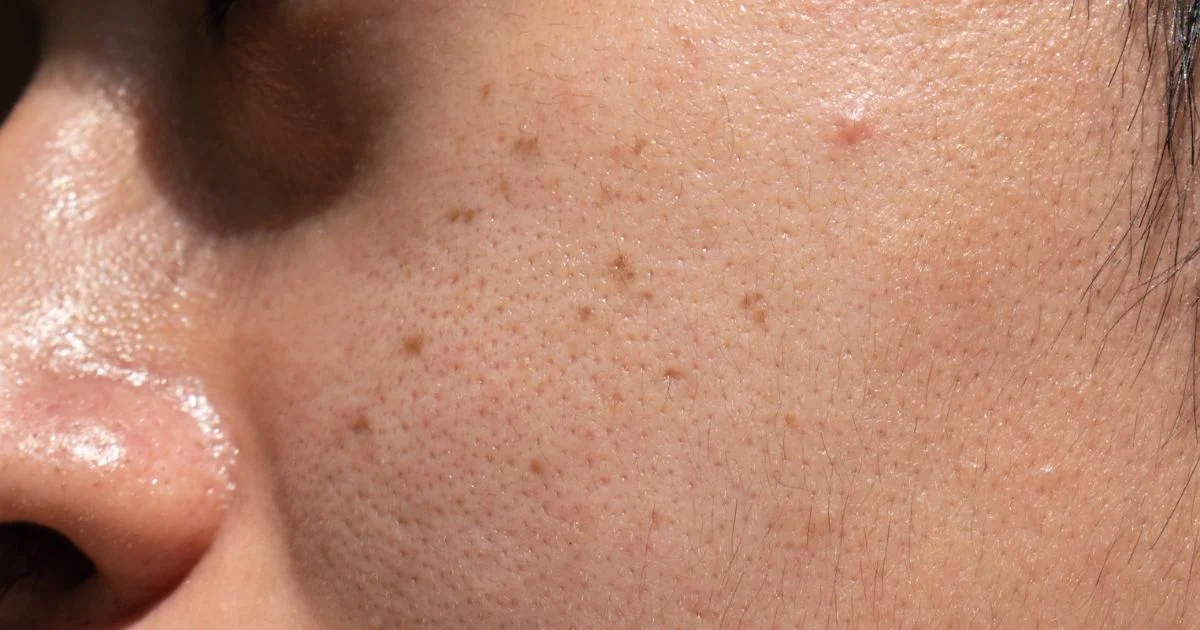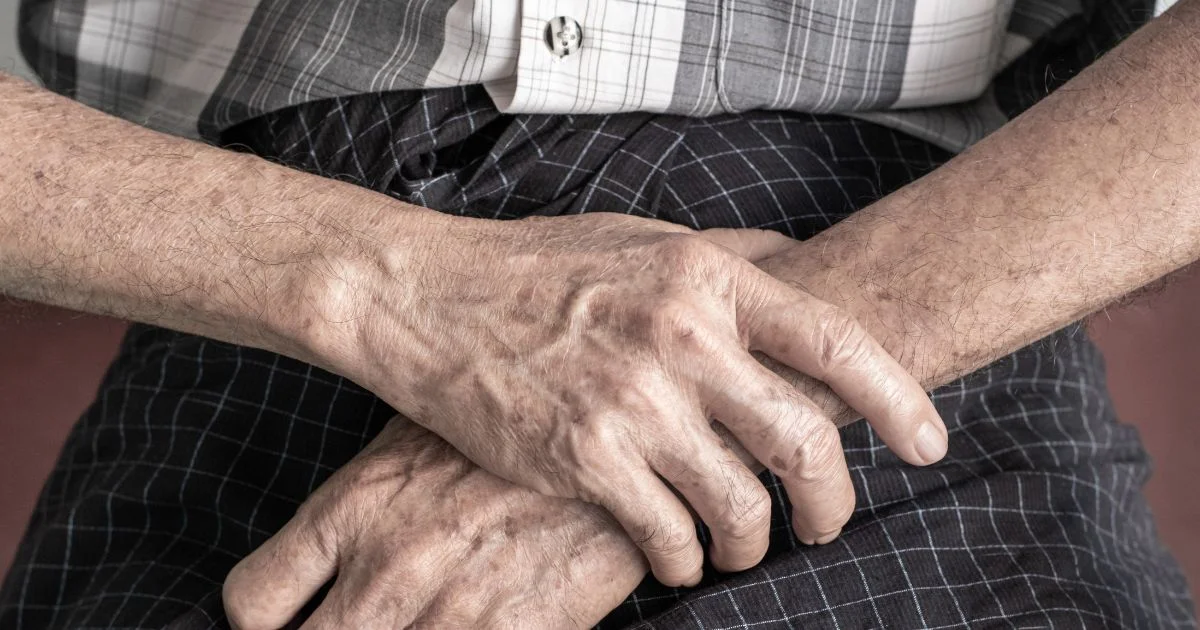Understanding Age Spots: Causes, Signs, Symptoms, and Solutions
Age spots, a common skin concern, are often associated with aging and sun exposure.
This guide will provide a comprehensive understanding of these skin changes, delving into their causes, how to identify them, and the most effective solutions for treatment and prevention.

What Causes Age Spots?
Age spots, also known as liver spots or solar lentigines, result from one or a combination of the following factors:
Understanding these causes can help in both prevention and treatment:
- Prolonged Sun Exposure: The primary cause of age spots is long-term exposure to the sun’s ultraviolet (UV) rays. This exposure accelerates the production of melanin, the pigment that gives skin its color.
- UV Ray Impact: UV rays stimulate melanin production. Over time, this can lead to the concentration of melanin in certain skin areas, forming age spots.
- Aging: As the name suggests, age spots are more common as you age. The natural aging process can lead to decreased melanin regulation, causing an uneven distribution of pigment.
- Melanin Clusters: With age, the distribution of melanin can become less uniform, leading to the formation of age spots.
- Skin Type: People with fair skin are more prone to age spots due to less melanin, which offers some protection against UV radiation.
- Melanin and Skin Protection: Melanin provides some natural protection against the effects of UV radiation. Less melanin means less natural protection.
- Tanning Beds: Similar to sun exposure, tanning beds emit UV rays that can accelerate melanin production and contribute to the development of age spots.
- Artificial UV Exposure: The UV light from tanning beds mimics the effect of sun exposure on the skin.
- Genetic Factors: There’s a hereditary aspect to age spots, with some people being more genetically predisposed to them than others.
- Family History: If age spots are common in your family, you might be more likely to develop them.
Understanding these causes is the first step in effectively managing and preventing age spots. While some factors, like aging and genetics, are beyond control, others, such as sun exposure, can be managed with preventive measures.

Recognizing the Signs and Symptoms of Age Spots
Age spots, while generally harmless, can be a cosmetic concern for many. Recognizing their signs and symptoms is important for identification and subsequent treatment.
Here are the key characteristics to look out for:
- Appearance: Age spots are characterized by flat, oval areas of increased pigmentation. They are usually tan, brown, or black.
- Size: These spots can vary in size but are typically the size of a freckle and can be as large as about half an inch across. Sometimes, age spots group together, making them more noticeable.
- Common Locations: Age spots most commonly appear in areas that have had the most sun exposure over the years. This includes the face, back of the hands, shoulders, upper back, and forearms.
- Texture: Unlike moles or skin tags, age spots are flat against the skin’s surface. They don’t have any distinct texture and should feel the same as the rest of your skin.
- Number: The number of age spots can vary significantly from person to person. Some may have just a few spots, while others might have many.
- Changes Over Time: Age spots may gradually grow in size and may darken over time, especially with continued sun exposure.
- Pain and Discomfort: Generally, age spots are not painful and do not cause any physical discomfort. However, any changes in sensation, texture, or color should be evaluated by a dermatologist.
For those aiming to improve the look of age spots, the team at Applied Aesthetic provides specialized treatments such as BBL Hero and MOXI laser treatments, cosmetic chemical peels, and VI peels. These services help reduce age spots and enhance your skin’s health and appearance, ensuring your skin not only feels good but looks great, too.
Keeping an eye on your skin’s changes is crucial, especially with aging. While our focus is on enhancing the appearance of your skin, your skin’s overall health remains the top priority. If you have noticed a suspicious mole or lesion, we strongly recommend you seek advice from a medical dermatology practice.
What Are the Effective Solutions for Treating Age Spots?
Managing and treating age spots can involve many methods, ranging from home remedies to professional treatments.
Here are some proven solutions:
- Topical Treatments and Prescription Creams: Utilize over-the-counter products with hydroquinone, glycolic acid, or retinoids, or seek prescription-strength options for lightening age spots.
- Professional Dermatological Procedures: Consider laser therapy, chemical peels, cryotherapy, microdermabrasion, or Intense Pulsed Light (IPL) treatments, which offer more targeted and often more effective results.
- Natural Remedies and Sun Protection: Explore natural remedies like lemon juice and aloe vera, and ensure consistent use of sunscreen and protective clothing to prevent new spots and darken existing ones.
- Lifestyle Adjustments for Skin Health: Maintain a healthy diet rich in antioxidants and stay hydrated to support overall skin health and potentially reduce the visibility of age spots.
Each of these solutions has its own set of benefits and considerations. It’s important to choose a method that aligns with your skin type, the severity of the age spots, and your overall health.
Applied Aesthetic’s Specialized Treatments for Age Spots
At Applied Aesthetic, we offer cutting-edge treatments for age spots, including BBL Hero and MOXI laser treatments, as well as cosmelan chemical peels and VI peels. These services are specifically tailored to effectively reduce the appearance of age spots and improve skin texture and tone.
- BBL Hero Laser Treatments: This advanced IPL therapy quickly and efficiently fades age spots by targeting pigmentation, enhancing skin texture, and promoting an even skin tone with little to no downtime.
- MOXI Laser Treatments: MOXI laser rejuvenates all skin types by stimulating collagen and elastin production through micro-injuries, reducing age spots, and improving skin texture for a youthful glow with minimal recovery.
- Cosmelan Chemical Peels: Cosmelan targets pigmentation issues like age spots by inhibiting melanin production, significantly lightening discoloration, and preventing future pigmentation for lasting results.
- VI Peels: These medical-grade peels treat age spots and improve skin health by removing damaged skin layers, revealing clearer, younger-looking skin with minimal downtime, and are suitable for all skin types.
When to Visit a Cosmetic Dermatology Clinic for Age Spots
Deciding when to visit a cosmetic dermatology clinic for age spots can depend on several factors.
Here are some key indicators that it’s time to seek professional advice:
- Cosmetic Concerns: Visit a dermatologist if age spots are affecting your self-esteem or you’re dissatisfied with your appearance.
- Limited Results from Home Treatments: Seek professional advice if over-the-counter remedies and home treatments fail to reduce the appearance of age spots.
- Noticeable Changes in Spots: If there are rapid changes in the size, shape, or color of your age spots, it’s important to get them evaluated for any serious skin conditions.
- Exploring Advanced Treatment Options: For access to advanced treatments like laser therapy or chemical peels, consult with a cosmetic dermatologist.
- Preventive Care and Comprehensive Assessment: A dermatologist can provide a thorough skin assessment, tailored treatment plans, and advice on preventing further age spots.
Visiting a cosmetic dermatology clinic offers access to a range of specialized treatments and expert advice, ensuring you receive the most effective and appropriate care for your age spots.